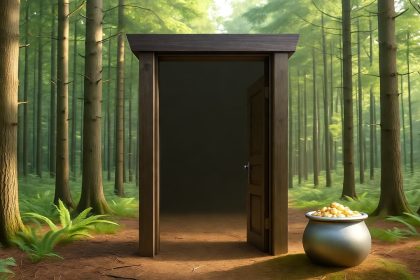Housing is one of life’s fundamental needs, right up there with food, water, and safety. For decades, though, housing affordability has become increasingly out of reach for the average American. With the median U.S. home price hovering around $440,000 and the median household income roughly $80,000, it’s easy to see why homeownership has become more of a dream than a given.
Enter the potential 50-year mortgage — an idea reportedly being explored by the Trump administration. The concept is simple: stretch out the repayment term to make monthly payments more affordable, and potentially pair it with a portable mortgage, which would allow homeowners to transfer their mortgage to a new property if they move. Together, these innovations could unlock housing security for millions of Americans.
Critics are quick to say that extending debt over half a century is reckless. But I believe it’s a smart step forward — a recognition that our lifespans, careers, and financial realities have evolved. If implemented responsibly, a 50-year mortgage could be one of the most transformative housing tools of our lifetime.
Housing Security And Family Formation
For many Americans, housing security is the bedrock of family formation. Couples understandably want a stable home before bringing a child into the world. The last thing you want, especially with a newborn, is to be forced out because your landlord wants to sell or raise the rent. This happens far more often than most people realize.
Once you have a baby, life becomes a blur of feeding every few hours, pediatrician visits, and emotional and physical recovery. The mother needs months to heal. The parents are running on fumes. During this fragile time, the last thing you need is uncertainty about your living situation.
When you own your home, that stress largely disappears. You can focus on raising your child rather than worrying about your next lease renewal. Housing security allows you to channel your energy toward what matters most: your family. Don’t underestimate this benefit.
The problem is, for a growing share of Americans, homeownership doesn’t even happen until middle age. The National Association of Realtors reports that the median age of first-time homebuyers is now 40 years old — an all-time high. That’s not just a statistic; it’s a reflection of how much harder it’s become to afford a home relative to income growth.
Meanwhile, our life expectancy is around 80 years. We may be living longer, but not by much. As a result, family formation is being pushed later and later, or abandoned altogether. From a biological standpoint, this trend carries enormous consequences.
If you wait until 40 to buy your first home and start a family, the odds are stacked against you. A woman’s chance of conceiving naturally after age 40 is under 1% per month. That’s like winning a mini-lottery. It happens, but not often. The result? More couples delaying or forgoing children altogether.
That’s why the 50-year mortgage and the portable mortgage could be such game-changers. They don’t just make homes more affordable — they promote family stability, economic participation, and national renewal. Without enough young families, we face demographic cliffs that threaten long-term economic growth.

The 50-Year Mortgage Is Great — If You Don’t Take 50 Years
The loudest criticism of a 50-year mortgage is that it supposedly chains people to debt forever. If you take out such a loan at 40, you’ll be 90 by the time it’s paid off. Sounds grim, right? But that argument misses a crucial point: almost nobody keeps a mortgage for its full term.
Today, 90–95% of mortgages in America are 30-year fixed-rate loans. Yet the median homeownership tenure is only about 12 years. Before the 2008 financial crisis, it was even shorter — around seven to eight years.
So why would we assume that borrowers would actually hold a 50-year mortgage for five decades? They won’t. Most will sell, refinance, or upgrade long before then.

Think about it: if you divide the average 12-year homeownership duration by 30, that’s a 40% “mortgage utilization rate.” In other words, most people use less than half their mortgage’s potential term. Apply that same rate to a 50-year mortgage, and the average homeowner would effectively hold it for about 20 years — not half a century.
This is why I’ve long encouraged people to consider adjustable-rate mortgages (ARMs), such as the 7/1 or 10/1 ARM. They better match real-world behavior. The 50-year mortgage simply extends this flexibility further. It’s an option, not a sentence.
More Options, More Freedom
The beauty of a 50-year mortgage is that it lowers your monthly payment, giving you greater purchasing power and flexibility. For young families or first-time buyers, this can make all the difference. At the end of the day, life is finite, and we rent everything before we die anyway.
Imagine you’re 32, newly married, and want to start a family before 35. You’ve saved diligently, but without the Bank of Mom & Dad, you can’t quite afford the monthly payment on a 30-year fixed mortgage. You consider waiting for home prices to drop 20%.
Eight years later, you get your wish — housing prices fall. But now, one of you has lost a job, and fertility is no longer on your side. IVF treatments cost $28,000 per cycle, and you’re emotionally and financially stretched thin.
If a 50-year mortgage had existed earlier, you could’ve bought a home in your early 30s, locked in stability, and focused on starting your family instead of timing the market. Time waits for no one, especially not biology.
The longer amortization period doesn’t mean you’re trapped. You can always make extra principal payments or refinance when your income rises or rates fall. The key is that you get to better choose when to buy, instead of waiting indefinitely for affordability that may never return.

A 50-Year Mortgage Is Music To A Real Estate Investor’s Ears
If you’re a real estate investor, you never fight the government — you ride with it. A 50-year mortgage expands the pool of potential buyers, which naturally supports property prices.
Historically, housing policy has always leaned toward pro-ownership. The government knows that about 65% of Americans own homes, and those homeowners form a powerful voting bloc. That’s why federal policies — from mortgage interest deductions to capital gains exclusions — are consistently designed to support homeowners.
Remember the 2008–2009 financial crisis? The government bailed out banks and homeowners alike. That set a precedent: when push comes to shove, the government will step in to stabilize the housing market.
I still remember when Bank of America voluntarily lowered my fixed-rate mortgage from 5.75% to 4.25% on a vacation property — unprompted. It boosted my cash flow by $500 a month overnight. That’s the power of policy alignment between lenders and the government.
And now, with the SALT cap raised from $10,000 to $40,000 under the One Big Beautiful Bill Act and talk of a portable mortgage system that lets you take your rate with you when you move, the momentum is clearly pro-housing.
When the government signals that it wants more Americans to own homes, you don’t resist — you invest.
Portable Mortgages: Unlocking More Freedom To Move
While the 50-year mortgage is getting most of the attention, the portable mortgage may actually be the more revolutionary concept. Roughly 70% of homeowners have a mortgage rate under 5%, and home sales is at a three year low, which means people are putting their lives on hold.
Under a portable system, homeowners could transfer their existing mortgage (and interest rate) to a new property. They’d still have to qualify and come up with any cash difference given financial situations tend to change overtime.
However, Imagine locking in a 3.5% rate and carrying it with you when you move. This innovation would solve the “golden handcuff” problem that’s frozen the housing market since 2022.
Right now, millions of Americans are reluctant to move because they don’t want to lose their low fixed-rate mortgages. A portable mortgage would free up inventory, boost mobility, and make housing markets more efficient — all without driving up default risk.
Combined with the 50-year option, the housing system becomes far more adaptable to real-world circumstances. Young families can buy earlier. Retirees can downsize without penalty. Workers can move for jobs without financial strain.
Invest In The Trend, Don’t Fight It
As an investor, the key to long-term success is aligning yourself with policy and demographic trends, not fighting them.
If the government wants to make housing more affordable through longer mortgage terms and portability, then housing demand will increase. And when demand increases, prices follow.
For homebuyers, the 50-year mortgage is a bridge to stability, if used responsibly. For investors, it’s a signal of enduring support for the real estate market.
Having optionality is a wonderful thing. A 50-year mortgage isn’t for everyone, and that’s fine. But for those who use it strategically, it can mean decades of housing security and greater flexibility to invest elsewhere.
Imagine if you could secure your family’s housing for half a century while still having the liquidity to build wealth in stocks, businesses, or education. That’s not a burden. That’s empowerment.
Invest In American Real Estate Passively
Owning real estate directly isn’t for everyone. Between rising insurance premiums, clogged toilets, and random HOA assessments, being a landlord can wear you down fast. But if you still believe — as I do — that real estate is one of the most reliable ways to build long-term wealth, there’s an easier, more passive way to play the trend: Fundrise.
Fundrise lets you invest in diversified portfolios of residential and commercial real estate projects nationwide — without needing a huge down payment or taking on a lifetime of mortgage debt. You get exposure to real assets, managed by professionals, while you sit back and collect potential dividends and appreciation.
You don’t need to be a millionaire or accredited investor. You can start with just $10 and own a slice of America’s housing market. The platform handles the acquisitions, renovations, and tenant headaches for you.
If 50-year and portable mortgages become reality, the housing market could experience a powerful second wave of demand. More buyers means more liquidity — and potentially higher property values. Fundrise investors can benefit from that same macro tailwind without ever signing a 600-month mortgage.
You can either be the one paying off a loan for 50 years or the one collecting rent and appreciation during those 50 years. Check out Fundrise here and start investing passively in America’s housing future.
About the Author
Sam Dogen founded Financial Samurai in 2009, now one of the most trusted and widely read independently-owned personal finance sites today. Every article is based on firsthand experience and deep financial analysis.
Sam has been a homeowner since 2003 and manages a diversified rental property portfolio that generates roughly $150,000 a year in semi-passive income. Through Financial Samurai, he shares practical insights on building wealth, achieving financial independence, and living life on your terms.
Read the full article here
















